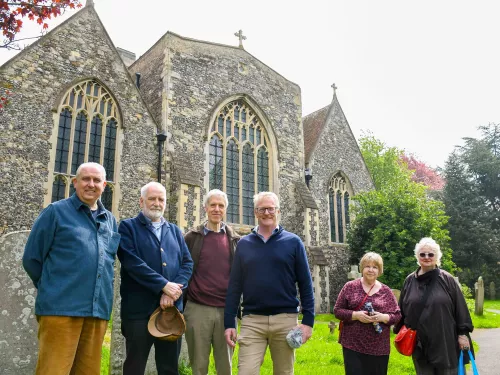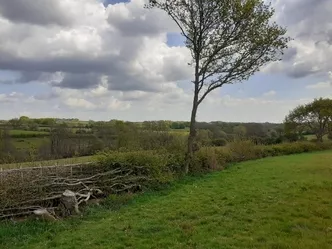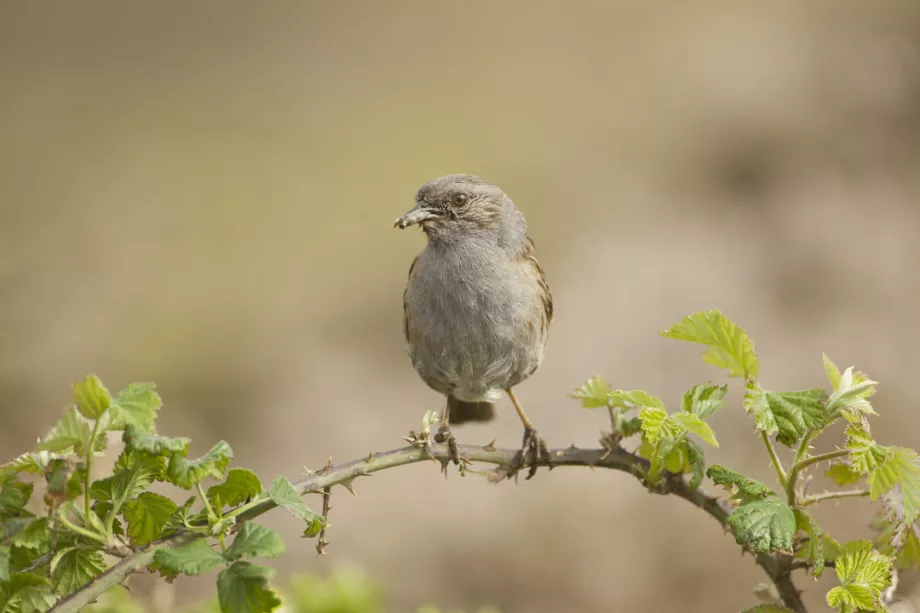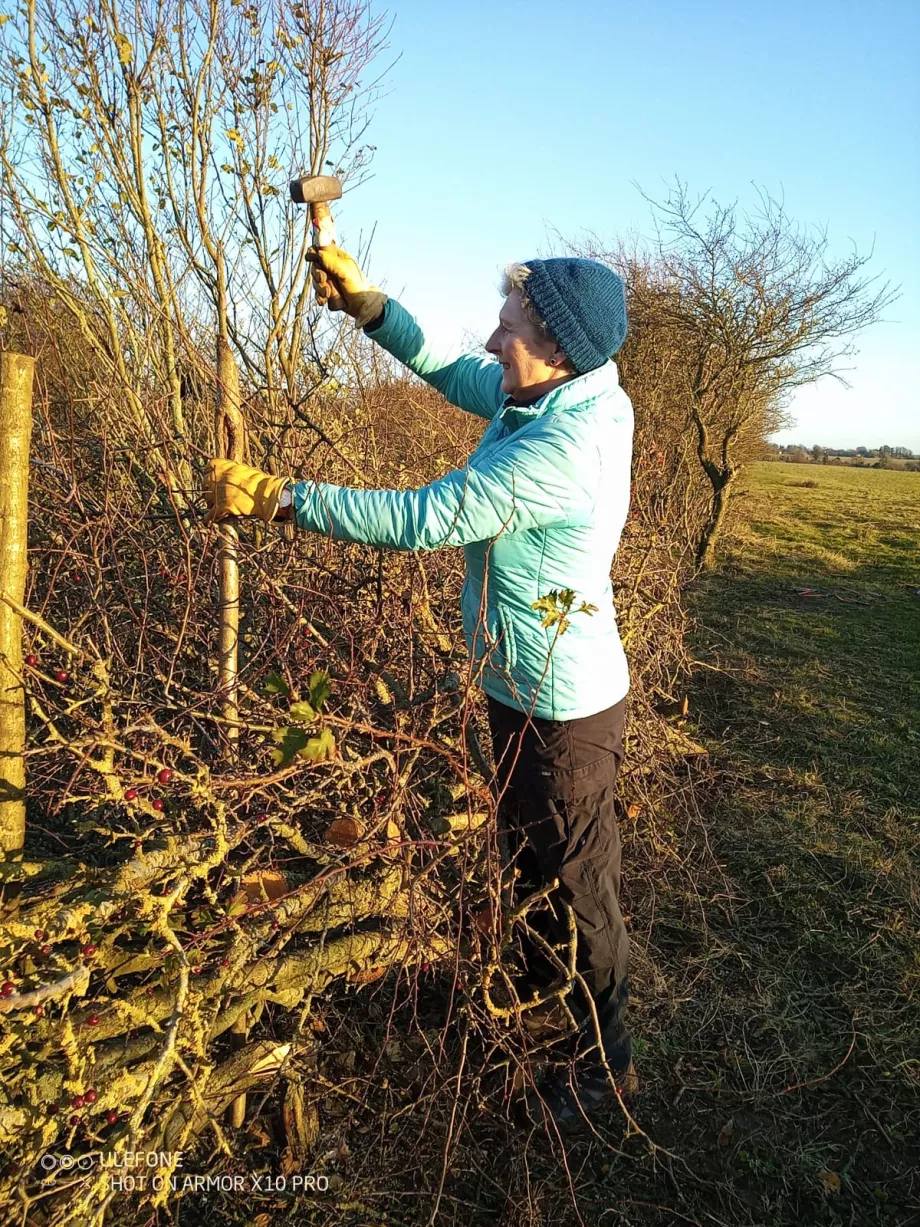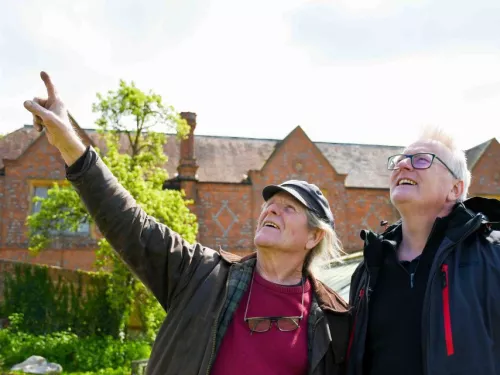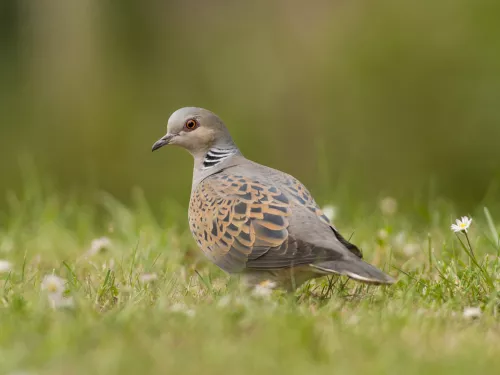Giving more life to hedgerows
Rob G: We untangle the stem that you're laying or the pleach you're laying and then you free up the bit you're going to lay and then down at the bottom of the pleach you're going to cut two thirds or three quarters of the way through.
Rob S: And this is the thing, isn't it? You know as we look at what Rob's doing with his hedge laying it, it's quite a brutal process. And when you first look at it, you think, “Oh my God, what have you done?”
Megan: I know, it can look quite harsh and some people look at this and think it's destructive. But I think once you understand what it's doing… what they're doing is taking a hedge that's got a limited lifespan and it's making it immortal because every time you lay it once every forty years, you give it another life cycle. So you're taking something that's, that might live sixty odd years and you're making it immortal. So I think this is a superpower.
Rob: Right OK! So I don't quite understand. So the original route, if you've got a hawthorn and you cut it off more or less at the base and lay it over…
Megan: So you get the regrowth at the base…
Rob: Then it will live indefinitely?
Megan: It’ll live another forty years and then someone will do it again and then it will live another forty years and someone will do it again and you'll have another forty years. Whereas if you didn't have that process, you wouldn't get that regrowth from the bottom that would enable it to do that.
Rob: So you never need to re-plant a hedge ever. You just need to manage it and it will last forever.
Megan: Ideally, it will last forever as long as you keep it on that rejuvenation cycle. Doesn't have to be laying, it could be coppicing and you could do it every thirty years if, you know, if you wanted to, but you need to make sure it spins through that rejuvenation. It's the only way they keep going in the long term.
Rob: And in terms of the, the wildlife side of it, what - you know, you mentioned over two thousand species. Presumably a lot of that will be sort of moths and insects and lichens all sorts of other things.
Megan: Loads of that’s insects, yeah. But we know how important insects are further up the food chain. I mean, once we lose our insects, we lose a lot of our birds as well and our mammals. So yeah, a lot of that's insects, but that will also be small mammals, hedgehogs, dormice – dormice love a good hedge, especially in this part of the world. And then you've got birds nesting in there. Then you've got all the things that come to a hedge for food. So you've got the things that physically live in there. Then you've got all the things that come to your hedge for food. So whether they're eating berries or leaves or maybe they're a barn owl that's hunting on the small mammals that live in your hedge. And then of course, you've got things that need the hedge to move along the countryside, so things that need it as a corridor.
Rob: So am I right from the talk you gave earlier on that the last two or three years we've seen more hedgerow planted than maybe the previous forty or fifty years put together?
Megan: Yeah, it's been phenomenal. So the government has given grants to put more hedging in and it's just been amazing, the recent uptick. The last couple of years in particular have been astounding for the amount of hedging going in and we're set to see that continue. So the government has—
Rob: Why is that happening?
Megan: Well we are down a lot of hedges. We had more than we do now. We've realised how valuable they can be to our farming, also to help reverse some of the species decline that we've seen. So there's now money to put some of those hedges back in and these can be -- we're in a wonderful situation. The government has committed to planting and restoring forty five thousand miles of hedging between now and 2050 which is huge. And we get to choose what they do. We get to choose which ones are there to protect the soil – and so, you know, might put them in different places – or which ones are there as wildlife corridors, which ones are there for wood fuel. Which ones are there on coppice rotation. So we get to design them, put them in to, to benefit us and our current farming needs.
Rob: Now, lots of people who are listening to this won't own a thousand acres of countryside. There's lots of people listening to this will just have a garden. Is there anything, is there such a thing as a pointlessly small hedge? You know, if you just plant a couple of bits in your back garden, will that help overall? Does it make a difference?
Megan: It will, of course it will. So with rural farmland hedges, we look at hedges, they have their value for food, for habitats, and for connectivity. Now if you've got them in your garden, even if you don't have connectivity, they can be food and habitat to wildlife. Now if all of us had wonderful wildlife gardens, then that would add that connectivity levels back in. So again, our gardens can act exactly like hedges act in farmland, but within our gardens and within our towns.
Rob: So we should plant a bit of blackthorn, we should…
Megan: Maybe not blackthorn! I don't wanna be responsible for blackthorn in gardens. No, maybe not blackthorn. Most of the other species you find in a countryside hedge will be absolutely fine in a garden. But personally, if you've got a small garden, I'd steer clear of blackthorn.
Rob: OK, why is that? Does it just go a bit rampant?
Megan: Blackthorn has a wonderful habit of suckering. So - it's - you plant it in one place and then it creeps out and you find suckers of it everywhere and it's got some pretty nasty thorns on it, which are wonderful to keep the cows in a field. But I wouldn't necessarily want a toddler running around the garden with the blackthorn!
Rob: Fair enough. That makes sense. OK, but so, other native planting in the garden is basically a good thing?
Megan: Absolutely. And you can be a bit creative in a garden as well. I've got a hedge in my allotment which I've made out of fruiting material as well. So you can put – I mean, I'm a greedy guts, I love to forage in a farm hedge but I also love a fruiting hedge in the garden. So I've got blackcurrants in mine as well. So things like that. Just, you know, as long as it can be laid, as long as it will work in a hedge and flower and fruit, you know, put it in. Preferably native species in gardens, but things that will flower, things that will fruit, things that will provide a nice nesting habitat as well.
Rob: Excellent. And I think you're right, I think you are a hedge geek!
Megan: I am. I am. There's no two ways about it. I'm not ashamed!
Rob: The fabulously enthusiastic Megan Gimber, Key Habitats Officer from the People's Trust for Endangered Species, AKA the Hedge Geek. She's brilliant. Do keep an ear out in a future episode for nightingales because the plan is to return to Moat Farm and visit some of Mike and Jan Bax's woodlands that provide perfect nesting habitat for one of our most iconic birds, which is of course sadly currently red listed, but with their help is making something of a comeback in their part of Kent. So that's something to look forward to!
More about hedges
How to make a hedge for wildlife
Wildlife at risk on farms as vital hedge and river rules vanish
